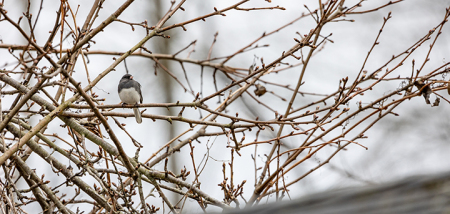Vultures Of The Water
Published:
March 17th, 2016
By:
Josh Sheldon
The ice is coming off of our local lakes and ponds, which means one thing to some eager fishermen. This is no lying matter; there is plenty of truth to this column with just a little bull mixed in.
Of all the fish in fresh water, one of the least respected is the bullhead. To people who like to eat fish and are in the know, bullhead are near the top of the list for table fare. They are in most bodies of water and can be easily located most of the time. There are plenty of tricks out there that will help you fill a bucket with them. I happen to be one of those stricken bullhead addicts and just can’t seem to get enough. The time and place you fish can be helpful at finding them and increase the amount you catch. The bait you use also can help you fill a stringer, when other things aren’t working. The time of year we catch the most is a pretty nice perk and makes for a nice relaxing outing.
The bullhead is a smaller cousin of the catfish family. For this reason they tend to have a pretty bad reputation amongst catch and release fishermen. They have nasty long and sharp dorsal and pectoral fins, and their strange texture. If you have never touched one, they feel like a mix between a slimy squirming frog and a pin cushion. They have a bad reputation because of these spines, which tend to get you more often than not if you don’t handle them properly. I learned a trick a few years back that will spare you some sore fingers, hands, and blood. There is a tool commonly used on toothy fish like pike and pickerel called a jaw spreader. It’s a spring loaded device that holds the toothy critters mouth open, while you remove the hook, so you won’t get slashed or bit. Bullhead spin and roll on the line and when you try to grab them, they try to pin your hand between the pectoral spines and their body, as to drive their spine as deeply into you as possible. Needless to say it hurts like heck and you don’t want to find out what it feels like. I have learned to use a large bath towel folded several times and place it in my lap. I tend to sit in a chair and relax while fishing for them, so the towel doesn’t bother you as if you were walking around. When I catch one, I gently set it on the towel which helps you grip them and prevents them from jabbing you. I then wrap it up in the towel, spread the mouth and remove the hook. I carry the fish to the stringer or bucket in the towel which also keeps you from getting spiked.
I’m not sure how true this is but I have heard it said many times, that a bullhead can taste with its whole body. One thing for sure is they detect their food more often than not by smell rather than sight. For this reason stinky baits like rotting fish, worms or chicken livers are commonly used. Bullhead are scavengers and bottom feeders, they are like the vultures of the water and help keep the lake or pond clean by removing dead animals that would otherwise rot in the water and foul it up. The best time to fish for them is as soon as the ice comes off. This can be nice after a long cold winter of sitting in an ice fishing shelter. They make their way into shallow muddy areas that are warmer as the sun sets. I light up a lantern, then get my rods baited and place them on Y sticks on the shoreline. You are allowed three rods per person, so it can be hard to keep up with them, especially if they are spread far enough apart. To prevent your lines being tangled when you land one, I recommend about 20 yards of space between rods, I attach a clip on bell to the rod tips, which allows me to audibly detect the bites rather than have to see them. This will allow you to hook the fish and reel it in before it is able to tangle in your rods.
Bullheads are excellent eating fish and can easily be filleted using an electric or fixed blade knife. The fillets are completely bone free and if you gill and bleed the fish out before cleaning it, the meat will be white and clean, rather than pink inside and bloody on the outside. Surprisingly they are a rather mild tasting fish and when batter dipped and deep fried, it’s hard to tell what kind of fish it is either way. Get out and fill a bucket with these awesome eating fish, but be sure to let the little ones go! The average keeper in most lakes and ponds is from one and a half to two pounds. I recommend releasing any smaller than that as you can typically catch plenty of bigger ones and taking little fish shoots everyone in the foot. In this case let them go, let them grow.
Good wishes and sometimes catching some bull isn’t such a bad thing.
Author: Josh Sheldon - More From This Author
Comments







